Lily Salter's Blog, page 232
November 22, 2017
Legal complaint filed against Kellyanne Conway for Roy Moore comments

Kellyanne Conway (Credit: AP/Matt Rourke)
A formal complaint against White House counselor Kellyanne Conway has been filed by Campaign Legal Center (CLC), a non-partisan, nonprofit organization for the advancement of democracy, for allegedly violating the Hatch Act in an interview on Fox News on Monday.
The Hatch Act is meant “to ensure that federal programs are administered in a nonpartisan fashion, to protect federal employees from political coercion in the workplace, and to ensure that federal employees are advanced based on merit and not based on political affiliation,” according to the Office of Special Counsel. The law prevents most executive branch employees, excluding the President and Vice President, from endorsing or attacking political candidates while using their official titles.
When asked in a “Fox and Friends” interview about Roy Moore, the accused child molester running for Senate in Alabama, Conway evaded the question and began making disparaging remarks about his Democratic opponent, Doug Jones.
“Doug Jones in Alabama, folks, don’t be fooled. He’ll be a vote against tax cuts. He’s weak on crime. Weak on borders. He’s strong on raising your taxes. He’s terrible for property owners,” said Conway in the interview. “And Doug Jones is a doctrinaire liberal which is why he’s not saying anything and why the media are trying to boost him.”
Her comments led Walter Shaub, a former director of the United States Office of Government Ethics under President Obama, and current Senior Director of Ethics of CLC to post the following tweet:
I found the video. She’s standing In front of the White House. It seems pretty clear she was appearing in her official capacity when she advocated against a candidate. This is at least as clear a violation of 5 U.S.C. § 7323(a)(1) as OSC identified with regard to Castro. pic.twitter.com/EwTwPriaVX
— Walter Shaub (@waltshaub) November 21, 2017
“She’s standing In front of the White House,” he said in the tweet, referring to Conway. “It seems pretty clear she was appearing in her official capacity when she advocated against a candidate.” The following tweet was posted by CLC’s official account on Wednesday:
CLC has filed a Hatch Act complaint against Kellyanne Conway for using her official White House title to advocate for a political candidate. https://t.co/l2QMxkN9n4 — CampaignLegalCenter (@CampaignLegal) November 22, 2017
Richard W. Painter, an ethics chief under the George W. Bush administration, also denounced Kellyanne Conway’s interview as a Hatch Act violation, tweeting, “This is an official interview. She has violated the Hatch Act by using her position to take sides in a partisan election. That is a firing offense. And for her this is strike two.”
This is an official interview. She has violated the Hatch Act by using her position to take sides in a partisan election. That is a firing offense. And for her this is strike two. https://t.co/U4kjbLu4NT
— Richard W. Painter (@RWPUSA) November 22, 2017
As Painter’s tweet might suggest, Conway has been no stranger to ethics complaints. She was “‘counseled’ on federal ethics rules” after urging viewers to shop Ivanka Trump’s brand in an interview on Fox News back in February.
Secretary of the Department of Housing and Urban Development Ben Carson also raised eyebrows when he was introduced by his government title at a campaign rally for President Trump’s reelection. But a spokesperson denied that the Hatch Act was violated, saying in a statement that “He did not hear his name before he was cued to go on. We are consulting with our Ethics Office on the matter to ensure it doesn’t occur again.”
What the consequences are for Conway remains to be seen. When Trump’s social media director violated the Hatch Act earlier this year, federal officials simply let him off with a warning.
GOP congressman’s nude photos leaked on Twitter
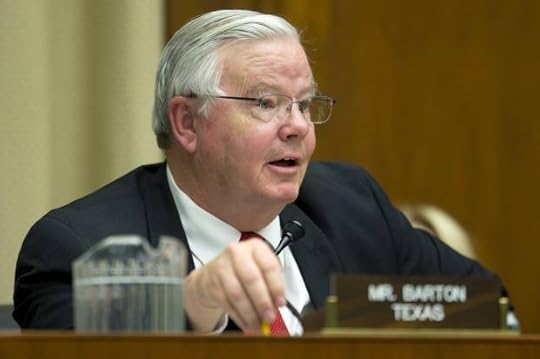
FILE - In this April 1, 2014, file photo, Rep. Joe Barton, R-Texas, questions David Friedman, the acting head of the National Highway Traffic Safety Administration, during his testimony on Capitol Hill in Washington before the House Energy and Commerce subcommittee on Oversight and Investigation. Barton told a constituent to "shut up" during a town hall meeting in his home district Saturday, March 11, 2017. (AP Photo/Evan Vucci, File) (Credit: AP)
Representative Joe Barton, R-Tex., has issued an apology after his nude photos surfaced on social media earlier in the week.
“While separated from my second wife, prior to the divorce, I had sexual relationships with other mature adult women,” Barton said. “Each was consensual. Those relationships have ended. I am sorry I did not use better judgment during those days. I am sorry that I let my constituents down.”
Barton, the longest-serving congressman from Texas, is adamant that the relationships — from which the photos surfaced — were consensual. No other women have yet come forward to dispute those claims.
The nude photo surfaced this week when an anonymous Twitter user named Parker21333 posted it online and censored the image by covering Barton’s penis. The user also claims to have videos of Barton masturbating, TMZ reports.
Barton told The Texas Tribune, “You’re as aware of what was posted as I am. I am talking to a number of people, all of whom I have faith in and am deciding how to respond, quite frankly.”
Though GOP circles are questioning Barton’s political future, according to The Tribune, a spokeswoman says Barton has no intention to resign and will continue with his campaign. Barton announced earlier this month that he’s running for re-election.
The scandal comes at a time when victims of sexual assault are coming forward in droves, from accusations against Hollywood bigwigs such as Harvey Weinstein and Kevin Spacey to politicians such as Senator Al Franken, D-Minn., and Democratic Representative John Conyers Jr. of Michigan.
Democrats should commit to an all-women ticket in 2020
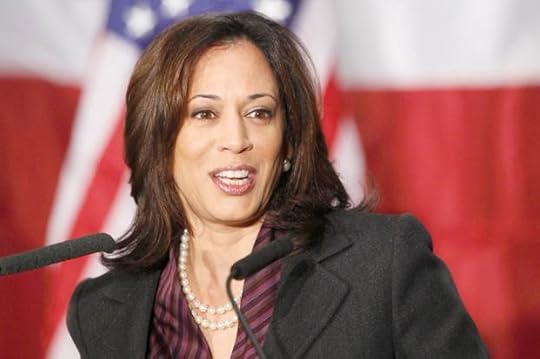
Kamala Harris (Credit: AP/Damian Dovarganes)
The Democratic Party should embrace an all-female ticket and a platform centered around health care, income equality, diplomacy, humility and human rights—right now.
Should the best man win? That is not the right question. Are there women in the Democratic Party who can do a better job than Donald Trump? That’s the right question.
Gillibrand and Oprah, Warren and Harris, hell, Michelle and Hillary, I don’t give a damn. There are 100 women . . . scratch that, there are 1,000 women . . . scratch that, there are a million women who could do a better job than Trump and the Republicans in running this country. Let’s pick two.
Let’s break the glass ceiling and banish the louts once and for all.
Because It’s Time
Ninety-nine years, 364 days, 23 hours and 59 minutes — and not a minute more!
Women secured the right to vote with passage of the 19th Amendment to the Constitution in 1920. Women shouldn’t have to wait another day, no less another four to eight years to run the show.
Lindy West, writing in the New York Times about Louis C.K., said, “The solution isn’t more solemn acknowledgments from powerful male comedians. We have those. The solution is putting people in positions of power who are not male, not straight, not cisgender, not white. This is not taking something away unfairly — it is restoring opportunity that has been historically withheld.” Simply swap out “comedians” and insert “politicians,” and you get where I’m coming from.
Bill Cosby was so extreme in drugging his victims, it was almost possible to see him as the exception—a sex-crime equivalent of mass murder. The college rape scandals were, well, in college. Harvey Weinstein is different. The frenzy began because Weinstein was a powerful media icon exposed by the world’s most famous movie stars. For the movie business, where film production, festivals, markets and openings take place around the world, with the hotel often a temporary office, the “casting couch” seemed baked-in. But these accusations set off a chain reaction because they were workplace-related and because the sheer number of women coming forward made it crystal clear — a predator at work with a 40-year career, is a predator who can do a world of damage to women for 40 years.
In some perverse way, our groper-in-chief Donald Trump helped to fuel the personal bravery and outrage. This year’s Hugh Hefner post-mortems also set the stage. One group, mostly men, wanted to celebrate his liberal politics, while many women were simply appalled. Here was your classic sleazy guy, rotating young women with ample breasts in and out of his bedroom until his dying day at 91 — and being applauded. Trophy-wife behavior may have finally become a legacy disqualifier. Roy Moore and underage girls, Kevin Spacey and underage boys, Louis C.K. and aspiring female comedians, the outrage and our understanding of the scope of the problem growing every day. The genie is not going back in the bottle.
Because It’s Winning
The Vox headline read, “Women defied conventional wisdom to win in droves in Tuesday’s election.” Of the 15 seats held by Republican white males in Virginia, nine were won by women, one of them a transgender woman. Women now hold 28 seats in the Virginia legislature, the largest percentage in Virginia history. Across the country there were firsts for women holding elective office.
According to Axios, “More women are running for office at every elective level.” “More than 15,000 women have contacted She Should Run” and “more than 19,000 have contacted Emily’s List.” The Women’s March is believed to be the largest single-day march in U.S. history. With a groundswell of this magnitude, don’t we want women at the top of the ticket, too?
When the Washington Post exit poll asked, “Which one of these five issues mattered most in determining how you voted for governor today?” by an overwhelming percentage, 39 percent respondents chose health care. Gun policy at 17 percent, taxes at 15 percent, immigration at 12 percent and abortion at 8 percent lagged far behind.
Donald Trump’s mano-mano gamesmanship with North Korea has also given the average American fits, and according to Gallup, his approval rating for handling North Korea is at an all-time low. Only a third of Americans think he can do the job. Diplomacy has never looked so good.
Women saved the Affordable Care Act with senators Lisa Murkowski of Alaska and Susan Collins of Maine casting two of the three deciding no votes. And women will defeat Donald Trump.
An all-woman ticket will bind the platform and energize the base. I can hear the candidates now. Health care is not a women’s issue, it’s America’s issue. Inequality in wages and the workplace are not women’s issues, they are America’s issues. Human rights is not a women’s issue, it’s humanity’s issue. Diplomacy is not a woman’s issue, it is the path to peace.
Tip of the Iceberg
Al Franken will not be the last story, not even close. There will be more politicians exposed for inappropriate sexual behavior. Each new revelation will make it just a little bit easier for the next woman, and in some instances, next man, to stand up and speak out. The revelations feed on each other to propel the next truth.
We may still be three years out, but the bar will rise and scrutiny of male candidates going forward will intensify. The ground has shifted. What once may have been considered “funny” is no longer acceptable behavior. The party can simply avoid the risk of a last-minute photo undermining a winnable 2020 election. There is no harm in men agreeing to step aside and clear a path.
Bernie supporters will certainly argue he drives the conversation, is the strongest messenger and deserves a second shot. But there is a greater good, and an even more powerful message to be sent. Bernie can continue to keep the party honest and chair the key Senate committees needed to carry out the agenda.
After the pussy-grab tapes, I was certain Hillary would win in 2016. And I told anyone who would listen, when women enter the voting booth, they will vote for Hillary. Yet 51 percent of white women voted for Donald Trump. I was dead wrong.
There was the added sting for women of Hillary losing to that guy. Trump is the living definition of the word lout—an uncouth and aggressive man. But times can change, and lucky for us, Americans usually go in the opposite direction when picking their next president. Democrats can offer America the anti-lout, anti-bully, anti-predator ticket: two women who finally, after 100 years, break the glass ceiling and send the world a strong message about our values as a country and the role of women in our society.
Will Puerto Ricans return home after Hurricane María?

The remnants of a destroyed home stand more than two weeks after Hurricane Maria hit the island on October 6, 2017. (Credit: Getty/Mario Tama)
Even before this year’s devastating hurricane season, the team of demographers I work with at Penn State and the Puerto Rico Institute of Statistics had predicted that the population of Puerto Rico would decline over the next few decades. Have Hurricanes Irma and María accelerated this trend?
Slowing population decline is central to the economic recovery plan drafted by the Puerto Rican government in March of this year. If migration off the island accelerates, it is likely that the government of Puerto Rico will face even greater challenges in meeting that plan’s milestones.
Preliminary data from the Puerto Rican Diaspora Study, which I recently concluded, can help shed light on how many Puerto Ricans who have fled the island might return home – and how many are gone for good.
Seeking shelter
In the two months since María made landfall, Puerto Ricans have left the island in even higher numbers than before. Recent commercial flight passenger data indicate that between Sept. 20, the day Hurricane María made landfall, and Nov. 7, approximately 100,000 people left Puerto Rico. That number exceeds the 89,000 people who left island during all of 2015 and increases by the day.
Lack of access to power, drinking water and health care are pushing people out. Recent forecasts of migration out of Puerto Rico from the Center for Puerto Rican Studies at CUNY suggest that, because of Hurricane María, the island may lose up to 470,335 residents, or 14 percent of its current population, by 2020. This would represent a doubling of migration off the island compared to previous years.
Surveying the diaspora
My survey is designed to collect information from Puerto Ricans in the United States about their family members who remain on the island. The survey ran from Oct. 17 to Nov. 13, 2017. More than 6,000 eligible respondents completed it.
I employed a social media recruitment approach with targeted advertisements for Puerto Ricans living in the United States. The recruitment process was aided by organizations that serve the Puerto Rican and Latino population in the United States, and respondents who shared the survey through social media.
Respondents were asked about the intentions of their family members or friends who have migrated or intend to migrate.

Intentions to stay in the US
The data show that some Puerto Rican migrants have plans to relocate to the mainland permanently, others have decided to stay on the mainland temporarily – but a third group is undecided, waiting to see how the island recovers. This third group is large, representing at least half of those expected to leave Puerto Rico before 2020 – or between 131,925 and 245,186 people.
The return to normality of electricity, drinking water and other essential services could become crucial in reducing permanent migration from Puerto Rico. That, in turn, would help stabilize the total population of Puerto Rico and allow the government to better achieve the goals of the economic recovery plan.
What’s next?
Helping Puerto Ricans return home will benefit the island, but it could also help the mainland.
Puerto Ricans who remain in Florida and other states will pose challenges to local and state governments on the mainland. This population will require public services such as education, health care and housing. Florida is already dealing with increasing numbers of students, and recruiting teachers from Puerto Rico to better serve the increasing Puerto Rican population in the state. Both Florida and cities in New York state have started to aid displaced Puerto Ricans with housing.
 If not reversed, the influx of Puerto Ricans will transform the demographic profile of the areas where they settle and produce shifts in workforce and job markets. They may even transform the political profile of the voters participating in the midterm elections and future presidential elections.
If not reversed, the influx of Puerto Ricans will transform the demographic profile of the areas where they settle and produce shifts in workforce and job markets. They may even transform the political profile of the voters participating in the midterm elections and future presidential elections.
November 21, 2017
No room for softness: Director Zack Snyder delivers “Justice League,” the heroes we deserve
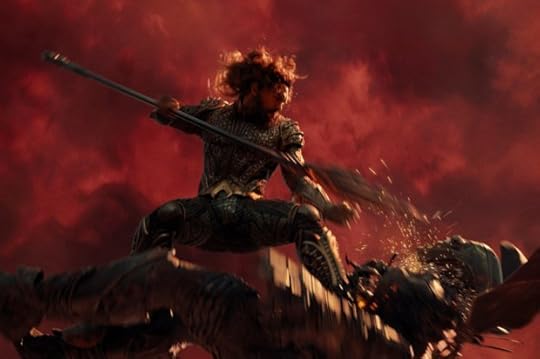
Jason Momoa in "Justice League" (Credit: Warner Bros. Picture)
It always seems strange to declare a movie a “failure” for making just shy of $100 million dollars, but nevertheless, by the standards of modern mega-blockbusters, “Justice League,” DC’s aspiring “Avengers”-killer team-up film, was an abysmal failure, taking in “just” $96 million on its opening weekend. So, what happened?
Blame the switch-up of directors, the bleary color palette, the underdeveloped cast of new “meta-humans” like Jason Momoa’s Aquaman or Barry Allen’s Flash. Blame Henry Cavill’s weird upper lip, digitally de-moustached in a way that seemed laughably conspicuous to even inattentive viewers. Or blame the relative lameness of DC’s roster of do-gooders, who lack the depth and edge of Marvel’s best heroes. Or attempts to compensate for this lack of edge by making Aquaman, among the dopiest of DC heroes, a scowling, hirsute bad boy, whose full body tattoos manage to set perfectly despite his spending the bulk of his life underwater.
But if anyone should be saddled with responsibility for the apparent inability of “Justice League” to connect with critics and audiences, it’s DC-Warner’s own last-ditch action hero: Zack Snyder.
While I don’t count myself among them, Zack Snyder has his fans. Some are even clamoring for the studio to release the directors unexpurgated cut of the film. He is a competent stylist and visual imagineer, even when it feels like his directorial hallmarks — the speed ramping, the slo-mo shots of people being punched in the face, the gloomy montages set to covers of pop classics — play like parodies of themselves. Even when handed off to another filmmaker, and tampered with by the studio, watching “Justice League,” it is obvious that one is watching a Zack Snyder film. And even at their worst, his films invite a morbid curiosity, where the Marvel movies promise only polished competence and (increasingly) smart-alecky humor. (For my mind, the fabulous disaster that is Snyder’s “Batman v. Superman: Dawn of Justice” proves far more compelling, at least in theory, than the bulk of Marvel Studios outings.)
There is, however, a deeper disconnect between what Zack Snyder does and what the audiences for modern superhero movies wants. And it’s not a matter of the distinctive style, or even the ostensible (and often mangled, plot-wise) substance of Snyder’s cinema. It comes down to — what else? — his politics.
* * *
“There’s no room for softness . . . not in Sparta,” says a one-eyed warrior in “300,” Snyder’s 2006 war-sploitation epic. “No place for weakness. Only the hard and strong may call themselves Spartans. Only the hard, only the strong.” It would, perhaps, be easy to excuse such lines — or indeed, the whole plotting of “300″; a story of war and conquest that plays like a de-ironized, utterly unpleasant riff on Paul Verhoeven’s space-fascist fantasy “Starship Troopers” — as proceeding from the film’s source text (Frank Miller’s graphic novel of the same name) or indeed, from the verifiably hard, strong, brutal history of ancient Sparta. But these words — “No room for softness! Only the hard! Only the strong!” — ring out like a gym mantra across Zack Snyder’s filmography, eddying into his dalliances in DC’s cinematic universe.
Snyder’s first DC movie, a 2009 adaptation of “Watchmen,” the grandaddy of “actually it’s a serious piece of art” comic books, fatally bungled the original authorial intent of author Alan Moore. Where the comic stands as a sustained critique of power and authority — and especially the power and authority wielded by traditional outside-the-law comic book caped crusaders — Snyder’s film feels more like an endorsement of authoritarianism. Moore hates the brutality and violence he depicts. Snyder savors it in pornographic slo-mo. Where the comic finds sympathy in the frailer, more recognizably human characters (like the impotent Nite Owl), Snyder’s world has no place for such softness. He’s more like the burly villain Ozymandias, holding such frailty in utter contempt.
In 2013’s “Man Of Steel,” Snyder and screenwriter David S. Goyer turned Superman into a distinctly far-right superhero. With repeated references to Superman’s godliness, and visual references to the passion and suffering of Christ, Snyder turned Superman into a patently obvious modern Jesus — albeit one with no problems with snapping an intergalactic super-villain’s neck. For Snyder’s Superman, such acts of violence are justified, so long as you look really, really pained while perpetrating them. In its bloated commingling of non-denominational Christianity and might-makes-right jingoism, all embodied in one of the most famous fictional character of all time, “Man Of Steel” was perhaps the perfect (or “perfect”) superhero film of post-9/11 America.
Snyder doubled down on his Superman-as-God shtick in “Batman v. Superman,” in which the Kyrptonian goes cape-to-cowl with Ben Affleck’s bat-suited vigilante, himself an extra-governmental mega-billionaire driven by his own wonky moral compass and self-interest, like a classic Randian hero. This a Batman who scowls stuff like, “the world only makes sense if you force it to” (Snyder was, reportedly, planning an adaptation of Ayn Rand’s objectivist instruction manual “The Fountainhead.” It would be, in its way, an ideal project for him). The film’s ostensible villain, Jessie Eisenberg’s hypomanic Lex Luthor, is the only character to question the benign role of power and the moral rectitude of self-appointed gods. Yet in the end, the seemingly all-powerful hero is struck down. God is dead. Until he’s not.
* * *
Where a different — though I hesitate to say “better — filmmaker may have used “Justice League” as an opportunity to explore the post-Superman DC universe, Snyder’s film opens in funerary mode, the world awash in heavy lament after the Man of Steel’s passing (The credits montage, this time, is scored to a version of Leonard Cohen’s “Everybody Knows,” a song about the wizened embrace of cynicism). Despite the proliferation of different super-powered heroes either directly figured or alluded to in “Justice League” — Batman, Cyborg, The Flash, Aquaman (and a whole subaquatic race of Atlantians), Wonder Woman (and a whole invisible island of Amazonians), the intergalactic Green Lantern Corps — the world still needs Superman to defeat the film’s big, bad, comparably godlike Steppenwolf, who plans to use a trio of magical boxes to turn the world into a searing hellscape (Given the drizzly depressiveness of the world Snyder establishes early on, one might reasonably see Steppenwolf’s geo-forming plan as an improvement).
Once again, Snyder relishes in the slack-jawed worship of power, like a flunky groveling before a Machiavellian Prince or a Hobbesian Leviathan. In “Justice League,” Ben Affleck’s aging Batman (his broken body all too human) berates Wonder Woman (Gal Gadot) for not inspiring people, for not turning herself into a symbol. Other heroes are similarly recruited to Batman’s League using direct, Randian tactics. He appeals to an immanent threat and so to their Randian “rational self-interest.” It’s only after Aquaman, Wonder Woman and Cyborg are directly threatened by Steppenwolf that they agree to join up (Flash is motivated more by his boredom, which is its own kind objectivist incentive). Saving the world isn’t the right or just thing to do. It’s merely rational; a fitting course of action when forced to choose between the options of existence and non-existence.
In one way or another, most of the Marvel Comics heroes feel guided by those parting words of Spider-Man’s Uncle Ben: “With great power comes great responsibility.” Snyder’s DC heroes feel beholden to some lax, amoral variation, like: “With great power comes . . . eh, who cares?” Not quite as catchy, I know.
Part of the modern appeal of the Marvel Cinematic Universe is its apparent altruism. In 2016’s “Doctor Strange,” Benedict Cumberbatch’s arrogant-surgeon-cum-sorcerer sees his own hubris and egoism crushed again and again in a time-looping boss battle. In the recent, and wildly successful, “Thor: Ragnarok,” the God of Thunder et al. risk their kingdom to load huddled civilians on an intergalactic spaceship to be sent adrift like a lost tribe. In “Justice League,” the heroes band together not because it’s the just or decent thing to do, but because if they don’t, well, they’re screwed, too. The rabble of humans in Snyder’s DC movies need their heroes — as protectors, as objects of worship and awe. But one never gets the sense that the heroes really need humanity, beyond its ability to bolster their own power. They’re never just saving humanity. They’re saving humanity from itself.
The compelling wrinkle, for me, is that while Snyder’s vision of heroism may be cynical, downbeat, and crypto-fascist, it also feels weirdly justified. At the very least, Snyder seems to come by his ideological leanings more honestly than the helmers of the Marvel movies, who seem guided by a corporate interest to keep things light, fluffy, buoyant and ultimately optimistic. The election of a self-styled strongman/clown like Donald Trump — so often depicted by sympathetic editorial cartoonists as a Snyderesque Superman figure — suggests some dark truth to our desire to be governed, even by tyrants and idiots. The Marvel movies want us to believe that we can have heroes who shield us from evil and act as our burly protectors. Zack Snyder, meanwhile, has no apparent use for the very idea of heroism — this despite being one of the most prolific contemporary directors of superhero movies.
In staging such staunch, ideologically grim ballets of slo-mo, bone-cracking violence, Snyder’s movies invite not just contempt, but curiosity. In their spectacles of rational, righteous power and their kowtowing to the altars of authoritarianism, they encourage us to wonder, like the ranting Lex Luthor does in “Batman v. Superman,” if power can really ever be righteous, or even innocent. Judging by box office receipts, Snyder’s may not be the superhero movies audiences want. But perhaps they’re the ones we justly deserve.
After a psychotic break, what’s the new normal?
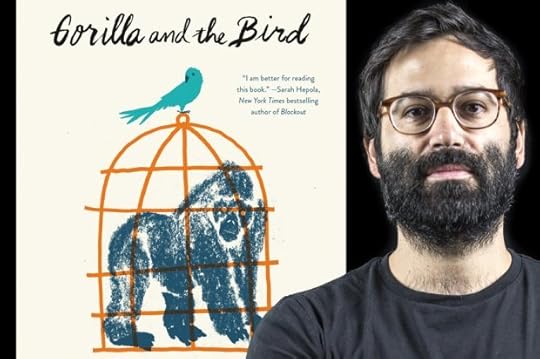
Gorilla and the Bird: A Memoir of Madness and a Mother's Love by Zack McDermott (Credit: Little, Brown and Company/KevinCarlin)
To most of the world, Zack McDermott was a dedicated, 26-year-old Brooklyn public defender. But to Zack, he was the star of a “Truman Show” reality show, engaging in antics with the actors around him on the streets of New York City. McDermott was in the midst of a psychotic break, one that would land him in Bellevue Hospital.
In his new book “Gorilla and the Bird: A Memoir of Madness and a Mother’s Love,” McDermott (the Gorilla) tells of his complicated journey back toward mental health, his life now with bipolar disorder and how his mother (the Bird) became the advocate he needed most.
During a recent conversation for “Salon Talks,” McDermott talked about overcoming the stigmas around mental illness, and returning to work after his hospitalization. “I think a bit part of it is forgiving yourself and allowing yourself to not be embarrassed any longer,” he said. “I tried to tell myself over and over again, ‘This is not your fault that you got sick. everyone here has problems and you don’t go home and think about theirs; you think about your own.'”
McDermott called the experience “embarrassing.” “The sickness itself is not a cough or a fever; it’s doing crazy, embarrassing things,” he said. “Eventually I got to a defensive place — if you’re judging me for this, that’s on you. That’s a fault with you, not with me.
Watch the video above to hear more on how McDermott was able to let go and not care at certain point what others thought. And, watch our full “Salon Talks” conversation on Facebook.
Tune into SalonTV’s live shows, “Salon Talks” and “Salon Stage,” daily at noon ET / 9 a.m. PT and 4 p.m. ET / 1 p.m. PT, streaming live on Salon and on Facebook.
I’m learning how to grieve like a Gen-Xer

(Credit: Getty/PeopleImages)
“Do you think you’re feeling survivor’s guilt?” my therapist asked a few days ago. “Of course I am,” I’d said. I’ve known a lot of death. And as any of us who somehow managed to stay alive knows — the aftermath is complicated.
It’s more than the constant reminders of how unfair life is. It’s not just grieving for those who’ve died, either. It’s being angry and selfish in that grief. My friends scorched holes in the world and then, for good measure, they took pieces of me I didn’t even know I’d given to them until they were gone. So now, I have the survivor’s guilt of one who is still learning just how much of her old self didn’t, in fact, survive at all.
Just a few years ago, death was a relatively abstract concept to me. It was a thing that had happened to my grandparents. I was lucky in that, I know. Then, in a single 24 hour period, one friend committed suicide and another dropped dead of a heart attack in front of his wife’s helpless eyes. In my memory, those two events were the lighting of a fuse. The beginning of a surprising slew of loss.
Patterns quickly emerged. The women’s deaths were usually drawn out and painful; the men’s were often sudden and sharp. And they just kept coming, at a seemingly relentless pace. It didn’t make sense. Everybody was still so young — fellow Gen-Xers raising their families and ascending in their careers, abruptly felled by diseases and drugs and violence. Men and women who left behind work unfinished, children with too few memories and friends who even now find themselves sometimes crying in a Starbucks because some nineties era Green Day hit reminds them of a person they thought they’d grow old with.
In the midst of this fiasco of loss, I danced with my own mortality: A cancer that offered slim odds of more than a few months to live. But instead, I got better. In the span of time it took me become ill, go through treatment and recover, other significant people in my life found themselves on the accelerated track to the grave. “This wasn’t the deal,” my friend Debbie had said before she died, and we were both pretty pissed off about it.
My disease was fairly random; my recovery was too. My friends’ deaths have largely been the same. This past year, several months apart and on different coasts, two people I loved died under vastly different circumstances. Most of what I miss is simply them — their humor, their generosity. Yet another part of what I miss is me — the in-jokes I shared with them, the long conversations, the times a squeeze of a hand or a smile across a room were a secret language between just us. Memories that I alone now carry.
The night I met Jessica, she came into my cancer support group and sat down in the seat that Cassie always occupied. I’d learned Cassie had died a mere half hour earlier, and now someone was just going to barge in and take her place. I was annoyed at the stranger. But Jessica didn’t take Cassie’s place, of course. She couldn’t, any more than anyone could take hers, now that she too is gone.
The space left after loss stays forever unfilled, and there are days when the holes in the ground beneath seem to take up far too much of the terrain. “How are you doing?” my teenaged daughter asked the other day, as I distractedly flipped through old photos on my iPhone. “I feel,” I said, “like these were my people and now I just have fewer people.”
On the days I feel most furious and unmoored in my grief, I remember the words I heard at one of the many memorials I’ve attended in the past few years. The woman giving the eulogy spoke of the encouragement and love our now departed friend had always given her, and her determination that their friendship wouldn’t die with him. It was still, she vowed, a lifelong relationship.
It’s not easy to keep up a relationship when one of you is dead, but I promise, you have to try. Otherwise, they’ll be nothing left of you. Parts of me keeps dying every time someone I cared for does. But part of them remains as well, the parts they gave to me. Love is porous like that. So I keep talking about them. I keep cutting carrots the way they taught me and listening to new music from the bands they introduced me to. I live inside my imperfect grief, a grief that has room for anger and guilt and the weird miracle of survival and will never ever have anything resembling “closure.” And when I quote “Foul Play” or smile through a certain shade of Urban Decay, I hope for a moment you see what I see: the lingering flicker of my friends.
Military confirms additional remains of Sgt. La David Johnson found in Niger

The remains of Army Staff Sgt. Dustin Wright who was killed in an ambush by dozens of Islamic extremists on a joint patrol of American and Niger Force. (Credit: AP/Staff Sgt. Aaron J. Jenne)
A month after his burial, more remains of Sgt. La David Johnson, who was one of four U.S. Special Forces soldiers killed in Niger, have been identified, the Pentagon confirmed on Tuesday.
Johnson’s remains were found on Nov. 12 near the village of Tongo Tongo, Niger, where he and three other American soldiers had been killed during an ambush by militants linked to the Islamic State on Oct. 4, NBC News reported. An inspection was conducted by a joint task force of FBI and military investigators, and the DNA evidence was later confirmed.
“We can confirm that the Armed Forces Medical Examiner has positively identified these remains as those of Sgt. Johnson,” Dana White, the Pentagon spokeswoman said.
Myeshia Johnson, the soldier’s pregnant widow, was not available for comment, but Rep. Frederica Wilson, D-Fla., said the family had been put through “agony” and that it was a shame the news was first heard through a television.
“He left a Gold Star Family and to learn about his final moments on TV and in the newspaper is a shame for this nation,” Wilson said. “It is a shame for any Gold Star Family to go through the pain and agony of learning about their son’s last moments on TV.”
Wilson also issued a statement, in which she expressed that it was”difficult to find the words to describe how dismaying it was to learn that some of Sgt. La David Johnson’s remains were found in Niger weeks after his funeral.”
The statement continued, “I want the family to know, though, that I will continue to push and push and push for a thorough investigation of both the ambush and La David’s final hours.”
On Nov. 10, the Washington Post reported that Johnson’s body was found with his arms tied together and that the back of his head had a gaping wound, according to at least two villagers that had seen the body.
“His two arms were tied behind his back,” Adamou Boubacar, a 23-year-old farmer and trader, told the Post in a phone interview. Boubacar then informed the village’s chief of the body.
“The back of his head was a mess, as if they had hit him with something hard, like a hammer,” Mounkaila Alassane, the village chief, confirmed in a separate conversation with the Post. “They took his shoes. He was wearing only socks.”
Chat up locals with this language school subscription that’s on sale for under $20

If you’re planning on spending a lot of time in an airport, on a train or some other form of transportation as you make your way to visit family and friends for the holidays, you might as well pick up some new language skills. With uTalk Language Education, you can learn on the go on any device you choose.
As technology helps make the world more connected, it only makes sense you’d use a tech-friendly solution to make your universe literally and figuratively flatter. From networking, to traveling, to earning a promotion or even landing a new job, it’s tremendously valuable to speak a second, third or even fourth language.
uTalk’s language programs are based on the practical vocabulary used daily by natives, helping you learn to speak the way locals do. You can choose from 130 different languages, and measure your progress as you go with engaging games. You’ll learn from native voice artists who are 100% proficient in your tongue of choice — and since you can learn from any device, you can pick up where you left off no matter where you are (even if that’s during your layover).
You can learn a new language before Black Friday hits: usually a lifetime subscription to uTalk Language Education starts at $64.99, but you can get it now starting $9.99 for one language, $19.99 for six languages, $29.99 for 12 languages, or $59.99 for 22 languages.
Head of Pixar, Disney animation takes six-month leave, apologizes for inappropriate contact
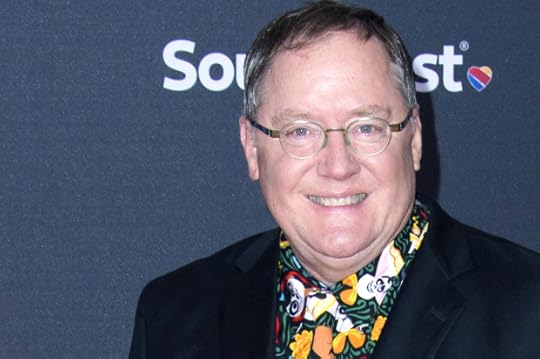
John Lasseter (Credit: Getty/Valerie Macon)
John Lasseter, head of Pixar and Walt Disney Animation Studios, announced Tuesday that he was taking a six-month leave of absence over unspecified “missteps,” in a staff memo. His absence was first reported by the Hollywood Reporter.
“I’ve recently had a number of difficult conversations that have been very painful for me. It’s never easy to face your missteps, but it’s the only way to learn from them,” Lasseter wrote. “As a result, I’ve been giving a lot of thought to the leader I am today compared to the mentor, advocate and champion I want to be.”
He continued, “It’s been brought to my attention that I have made some of you feel disrespected or uncomfortable. That was never my intent. Collectively, you mean the world to me, and I deeply apologize if I have let you down.”
Lasseter added that he especially wanted to apologize to “anyone who has ever been on the receiving end of an unwanted hug or any other gesture they felt crossed the line in any way, shape, or form,” giving some indication of complaints lobbied against him. “No matter how benign my intent, everyone has the right to set their own boundaries and have them respected.”
Lasseter said that upon talking with Disney, the parties were united in the opinion that stepping away from his position on at least a temporary basis is the right move. “My hope is that a six-month sabbatical will give me the opportunity to start taking better care of myself, to recharge and be inspired, and ultimately return with the insight and perspective I need to be the leader you deserve,” he said.
For Lasseter to take leave from his position as chief creative officer of Walt Disney Animations is no small thing. In the position since 2006, and Lasseter is widely considered a formidable figure in the entertainment industry and one of the reasons Disney and Pixar’s animated output continues to lead the field. Certainly, he’s lauded as one of animation’s most important players. Lasseter co-founded Pixar and helped create some of the studio’s most iconic films such as “Toy Story” and “Frozen.” Disney bought the studio in 2006.
“Known for his big-kid personality and penchant for Hawaiian shirts and bear hugs, he is widely credited with resuscitating Disney’s in-house animation studio during the last decade after a long period of struggles,” the LA Times wrote.
But as the list of accused men of sexual misconduct in Hollywood only grows, some employees reportedly began to discuss Lasseter’s “creepy” behavior according to Variety.
A Disney spokesperson said in a statement: “We are committed to maintaining an environment in which all employees are respected and empowered to do their best work. We appreciate John’s candor and sincere apology and fully support his sabbatical.”




